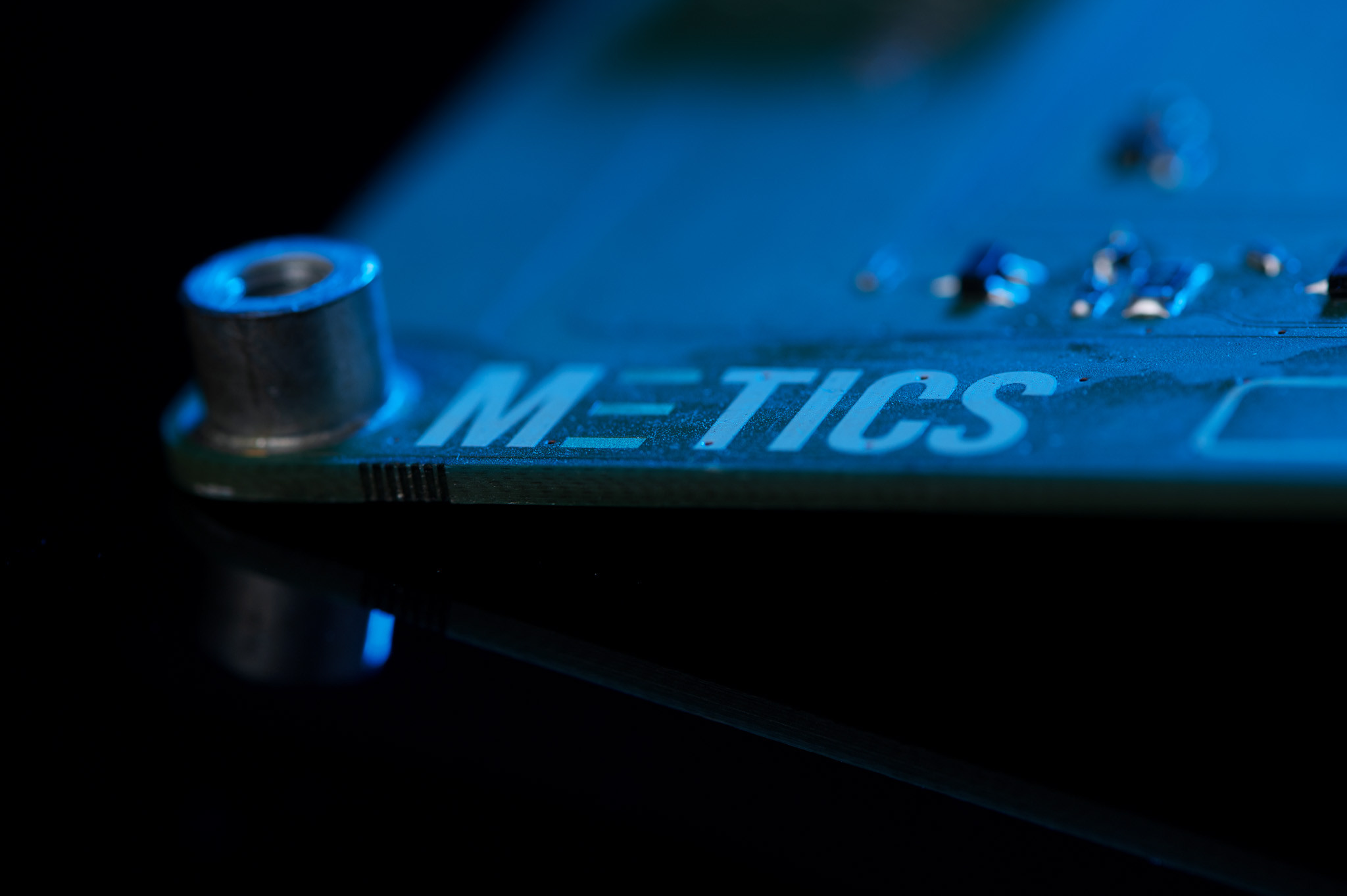Electronics designcreative electronics
Developing Printed Circuit Boards (PCB) is our core business. METICS is fully equipped with the tools and knowledge to convert a seemingly complex idea into a fully functional electronics design. Creating, testing and verifying the design are the following competences. When software is needed, the embedded systems skills will be added.

In-house expertise:
Analogue circuit design
Digital circuit design
Power electronics design
CE/FCC/EMC compliance
Schematic design
PCB layout design
Circuit simulation
Analogue circuit design
Connecting electronics with the real world is a critical aspect of electronic design. It means that the circuit can convert the continuously changing parameters in the real world into an electric signal or vice versa. Distinguishing meaningful information from all the rustle in and interferences of the physical world, requires extensive understanding of the principles of electronics. The knowledge and experience of the METICS team combined with the power of simulation tools, makes it possible to design firm and reliable analogue circuitry.
Digital circuit design
One of the biggest advantages of electronics is the ability to run software in it. The interface software has to the physical world is through digital circuits. Here, the binary 0s and 1s are presented as different electric voltages. Digital circuits are the base for communication protocols, digital signal processing and loads of other applications.
Power electronic design
Power distribution for various peripherals/equipment and the electronics circuitry is a common requirement. We provide tested solutions that provide high efficiency power delivery.
Circuit simulation
Verifying the design before producing it, saves a large amount of time and money that could otherwise go into debugging and creating revisions. Creating simulations with the aid of computer software to mimic the real hardware, requires understanding of the different possible outcomes and constraints imposed by electronic designs. We are able to successfully make decisions using our simulation thanks to our experience and expertise.
Schematic design
Once the design and simulation steps are complete, the first step to realisation of the electronics is the schematic design. We maintain an extensive library of electronic components and standard circuits to create the design. Different parts of the electronics are connected to create the scheme of the full system. This is done by using an Electronic Computer Aided Design (ECAD) tool - Atlium.
PCB layout design
The layout design is the stage where the physical parts of the design are defined. The schemes are used as a reference to draw the various connections on the board and to place the components in the right spot.
Compliance
Making sure a product complies with regulations is important for production. For electronics, certain rules apply for the possible effects on the environment and also the other way around. For example, a circuit cannot radiate over a certain level of electromagnetic energy and the circuit can also not be effected by a certain level of electromagnetic energy. There are stricter rules depending on the industry/application of the product. We take these aspects into consideration when designing so we prevent re-designing and we can take the product to the market a lot faster.
 Your favorite engineers
Your favorite engineers
 Realizing ideas
Realizing ideas
 Only teamwork
Only teamwork
















